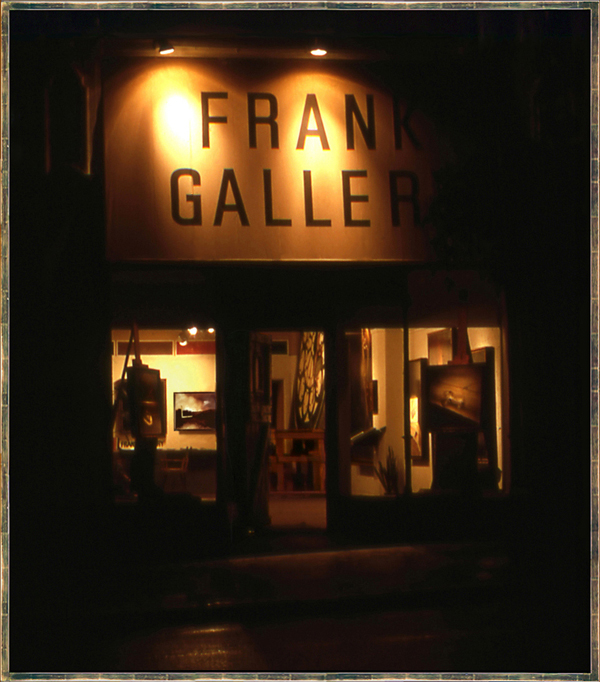|
|
Over
the city of San Francisco,
like clouds forming
in the upper stratosphere,
were the dynamics of a new age, seeded by
the views
of a free-thinking culture of the
1950s, the bohemian era of
the beatnik
generation, the first modern
antiestablishment movement
which introduced new
ways of perceiving through literature and
poetry which,
in turn, helped transform social consciousness
and galvanize
future forms
of self expression, fostering
big political
movements that
homogenized into new concepts in music,
literature
and the arts of
the 1960s and became
the repository of the new
ideas that took root and came to full expression
in the decade of the 1970s, a growth cycle of three
decades. |
|
|
On
January
1st, 1970, the Frank
Gallery opened its doors to one of the
most unique exhibits
featuring
the works of
sculptor Beniamino
Bufano and paintings
by G. Mark Mulleian,
that brought national
public attention and many notable admirers
ranging from William Kunsler,
attorney of the Chicago Seven trial, to the Three
Christy Minstrels,
a popular singing group of the 1960's. Mulleian
was first
discovered by author Leonard Roy Frank in
1968, a discovery
which
opened
the doors to a major exhibit at the Frank
Gallery in the 1970's.
Upon Bufano's death his works
were recalled
by estate administrators,
consequently
expanding Mulleian's
exhibit to an
ongoing feature
at the Frank Gallery,
bringing further
international exposure,
attracting
people worldwide,
and notables
such as Elton John, Janice
Joplin, Robert Shields,
Shirley Temple Black, Leotine
Price, William Ball and Herb
Cean, and many
more. |
